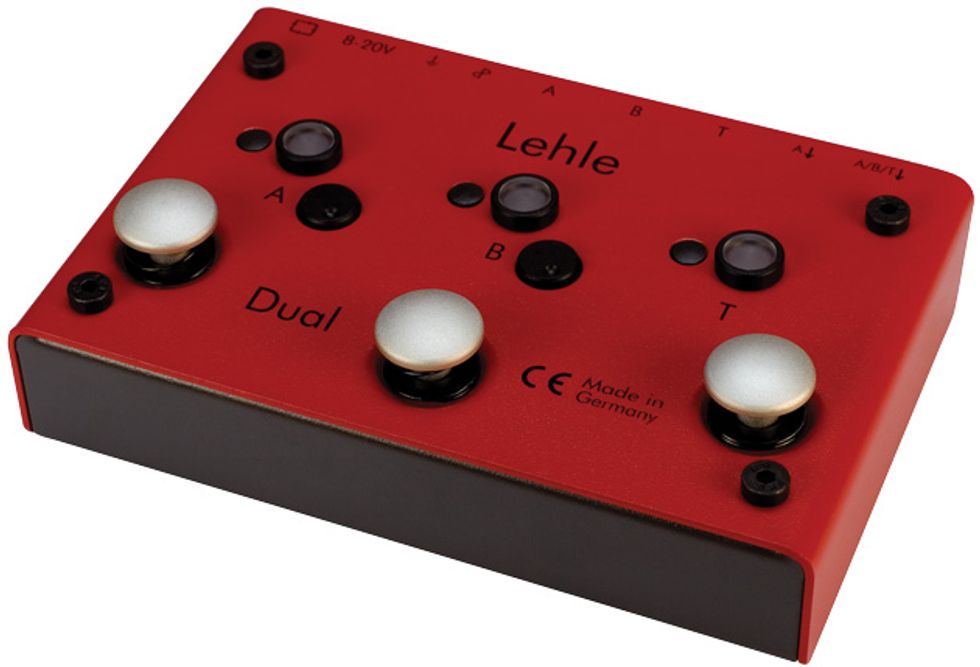No matter what style we play or whether we use a clean, crunchy, fuzzy or heavily distorted tone, most of us guitarists crave a sound that’s balanced and full. But what about those scenarios when your standard “full tone” isn’t big enough? Perhaps there are songs where you just need to get truly massive in the choruses to set them apart from the verses. Perhaps you play in a guitar/bass/drums trio and you need to fill up quite a bit of space sonically. It might be that you wish your acoustic or electric guitar didn’t sound so small, mono, and pinpointed in your in-ear monitors when playing live. Whatever the case may be, I’d like to share some strategic ways to fatten, thicken, and widen your guitar signal.
I’ve previously touched on both the virtues of buffering your signal when appropriate and the benefits of a clean, properly wired rig. It should go without saying, but clean wiring will help ensure that you are starting with a robust, core tone that’s free of loss due to capacitance and free of ground loops or extraneous noise. So, with that out of the way, we can get to the fun stuff.
Choruses and harmonizers. When chorus units came on the market in the ’70s, they found favor by providing guitarists with a quick and easy way to make rigs sound thicker, while also helping to create a stereo setup (when desired) by running the output of the chorus to two amplifiers. The initial aim of choruses was to create an illusion of more than one guitar playing—hence the “chorus” moniker—and that was accomplished by delaying and modulating the core guitar signal and then blending in that modulated signal with the core tone. Notable guitarists in trios, such as Andy Summers and Alex Lifeson, have used stereo chorus units to great effect for thickening and widening their tones to fill up sonic space.
Harmonizers came on the scene in the late ’70s, and some guitarists used them to create dense harmony lines with multiple intervals. (Trevor Rabin’s solo on the Yes classic “Owner of a Lonely Heart” is a good example.) Other players discovered that a harmonizer could be used to create a sort of “still” chorus effect—accomplished by slightly detuning the core guitar tone by generally +/- 9 cents or less. This technique can sound fat and like a subtle chorus in mono, but in stereo, it can sound positively huge, which is why it became a staple sound throughout the ’80s and into the ’90s. (Eddie Van Halen relied heavily on this sound for over a decade.)
More subtle thickeners. Delays can be used in simple, creative ways to create a larger-than-life tone, but without the obvious modulation of a chorus effect. If you have a simple mono delay pedal and two guitar amps, try placing the amps a few feet apart and running your guitar into an ABY box. Send “A” to your first amp and send “B” to the delay pedal on its way to the second amp. Dial in a very short delay time, the mix to 100 percent, and the feedback all the way off. When you play through both amps at once and switch the delay unit in and out, you should hear the image go from pinpointed and cutting to wide and huge. By varying the delay time (but always keeping it quite short), you can fine-tune the width and the diffuse quality of the sound.
If you have two amps running in stereo via a stereo delay unit, try setting up a stereo delay patch with a different short delay on each channel (30 ms on the left and 40 ms on the right, for example). By setting the feedback to zero and blending in the delay using the mix control, you’ll hear the stereo image get fatter and wider the more delay you blend in. If your delay has modulation controls, increasing these can create a cool chorusing effect.
In-ears and the dreaded mono guitar. Many artists are using in-ear monitors these days, but it can be a difficult adjustment for guitarists, especially if you use a mono amp or acoustic setup. We just aren’t used to hearing our instrument in such a pinpointed, mono way! Using a stereo rig can really help, but not every guitarist can do this, or wants to do this.
Try this trick: Have the engineer pan your main guitar signal left 40 percent and use an auxiliary send to route your guitar signal to a delay set for 8 to 11 ms of delay, zero feedback, and 100 percent wet. Send the return of the delay to another channel and pan that channel 40 percent right. Then pull up that channel, blend it at the same level of your main guitar channel, and voilà—your sound is now far more spacious and stereo-ized in your in-ears. This sounds great on electric-acoustic guitars as well as miked guitar amp signals. Singers who play guitar really dig this trick because it splits the guitar wide and makes space for their voice up the middle.
I hope you get a chance to experiment with some of these tricks. Until next month, all the best to you, guitar nerds!





















